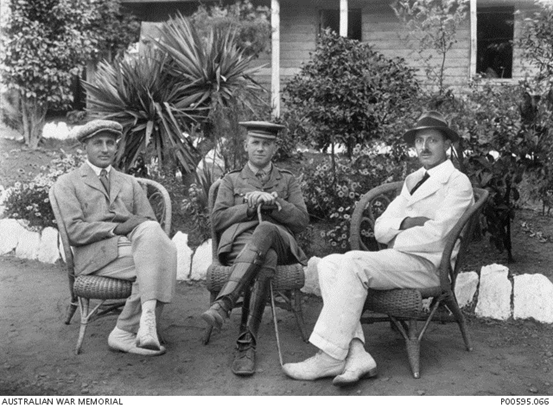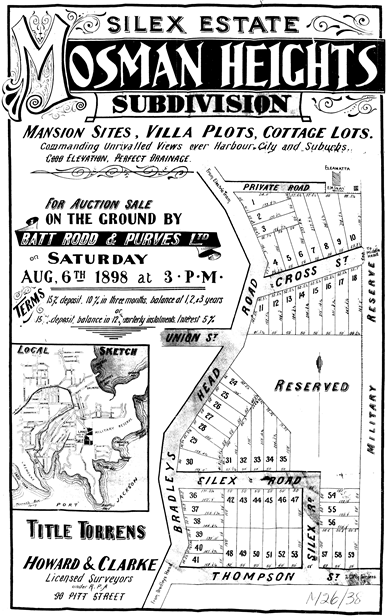 Charles Bryant’s 1931 painting depicting the HMAS Sydney a the fight with Zeppelin L43 in the North Sea.
Charles Bryant’s 1931 painting depicting the HMAS Sydney a the fight with Zeppelin L43 in the North Sea.
Search Trove
Behind the lines
Welcome to our team space. A key part of this project is sharing the work done ‘behind the scenes’. Learn about digital tools and technologies. Explore online sources relating to World War One.
HMAS Sydney vs. Zeppelin L43.
Captain Frederick Reidy Jolley
There is not a lot of information available on Captain Jolley He was born in Melbourne 1813 and had what seems to be a very interesting life. After serving in the Boer War he settled in New Guinea and worked as a planter for the infamous Queen Emma.
Jolley became the British Consul for German New Guinea (Rabaul) and in 1914 was imprisoned at the planation by the Germans. However, it was a short-lived imprisonment as Major F B Heritage of the Tropical Force arranged for his release. Jolley joined the 4th Infantry Battalion and served in France during the First World War.
After the war he returned to New Guinea, had a planation at Kokopo, became deputy Chairman of the Expropriation Board and in 1927 helped establish the Melanesian Company, a plantation and trading business. It was one of his employees, Sumsuma, who started the 1929 Rabaul Strike.
In 1932 Jolley purchased a property ‘Steepleton’ at 13 Silex Road, Mosman, purchased more portions, subdivided and in 1936 engaged architect Clifton D. Leake to design the Art Deco apartments ‘Greentrees Flat’ 11A Silex Road.
Colonel Robert Sydney Sands M.B.E., V.D.

Portrait of Colonel Robert Sands (centre) and two permanent German officers captured in New Guinea, Captain von Klevitz and Lieutenant Meyer, c. 1916.
Robert was the grandson of John Sands who had established the successful Sydney printing company John Sands Pty Ltd in the 1840s. Robert was born in Sydney, educated at King’s School, Parramatta and at All Saints College, Bathurst.
After joining the Scottish Rifles in NSW as a bugler he quickly rose through the ranks. His skill in military matters, combined with a good business head, saw him hold responsible positions. He was Adjutant-quartermaster, and second in command of the 1st Australian Infantry Regiment, under General Holmes; he became A.D.C. to Governor –General Lord Northcote, liaison officer during the visit of the American Fleet and in 1914 was made Commandant of the concentration camps of Australasia. These included Trial Bay Goal and Holsworthy internment camps.

Holsworthy, New South Wales, c. 1916. The YMCA hall and guards’ canteen and the theatre at the German internment camp.
Promoted to Lieutenant Colonel in 1916 it is believed Robert was asked to undertake secret service work that involved travel, to a number of countries, until the end of the war. He was created a Chevalier of the Legion of Honour in 1924.
After the war Robert returned to John Sands Pty Ltd as Managing Director. In 1919 he moved into ‘Marmion’, 9 Silex Road, Mosman. This house had been designed by architect, Edwin Roy Orchard who was responsible for many Arts & Crafts houses in Clifton Gardens and Mosman.
Silex Road, Mosman....
As always happens in Local Studies when we start researching one thing we, somehow, become distracted by another thing!
While researching an idea for an exhibition I came across a rather surprising piece of local information, then another and then another!
It appears one of the architects who designed the Australian War Memorial lived in Silex Road; the Commandant of the Internment Camps of Australasia during the First World War lived in Silex Road; a British Consul for German New Guinea lived in Silex Road.

Black Friday, 'Bloody April': The death of Lancelot; the Red Knight rises...
During Bloody April one Royal Flying Corps airmen was killed, on average, every 18 hours. Friday April the 13th was no exception, a black day for the RFC, and one Mosman family.
 FE2b one of the ‘…appallingly makeshift aeroplanes…optimistically called a “battleplane” by the authorities’ Photograph and quote from Tayor, P.G. ‘Sopwith Scout 7309’
FE2b one of the ‘…appallingly makeshift aeroplanes…optimistically called a “battleplane” by the authorities’ Photograph and quote from Tayor, P.G. ‘Sopwith Scout 7309’
Categories
Archive
Help us transcribe
Help us transcribe diaries, letters and honour rolls.
Other WWI commemoration projects
View our list of local, web-based WWI commemoration projects in Australia. Do you know more?
Add a project by completing this form